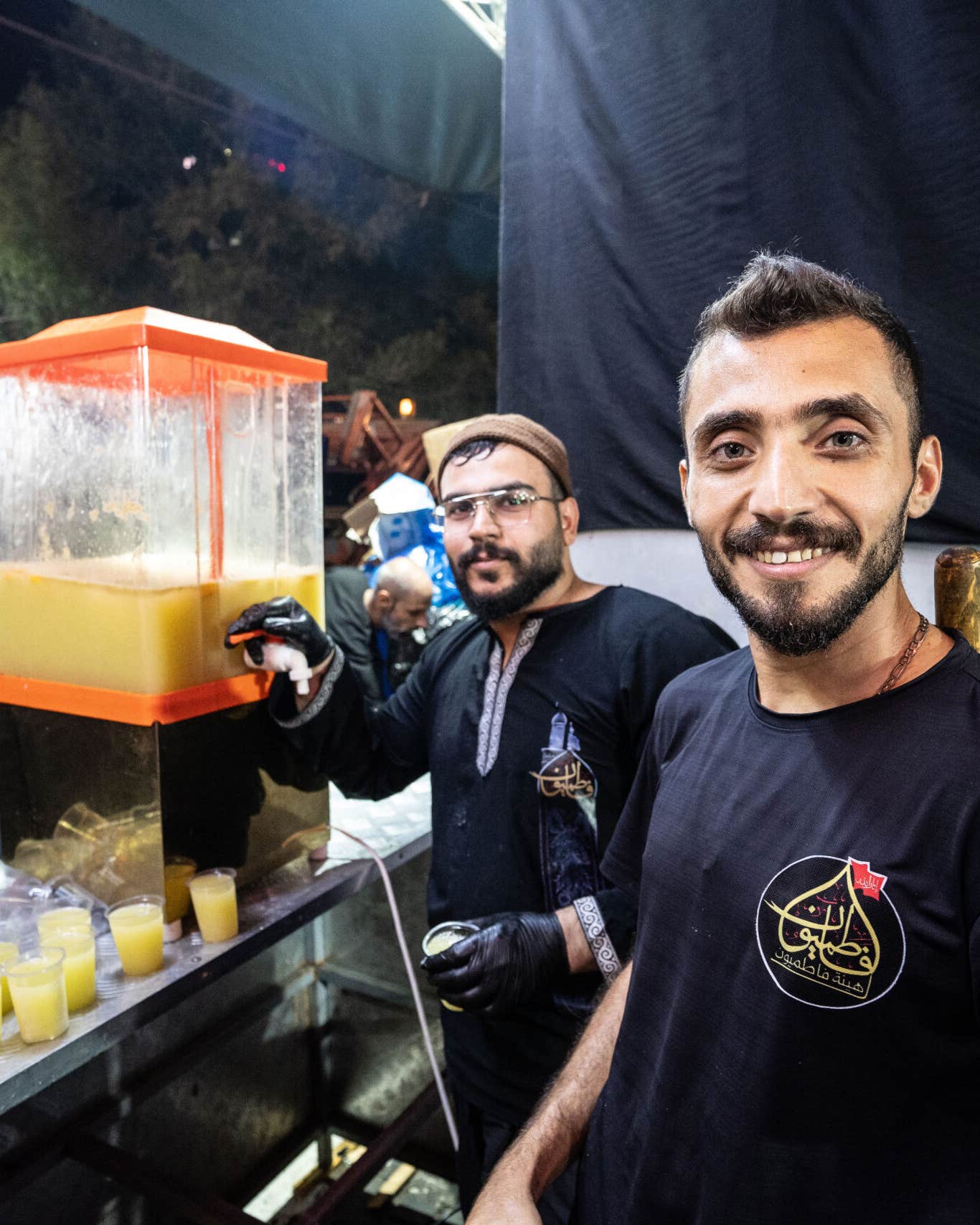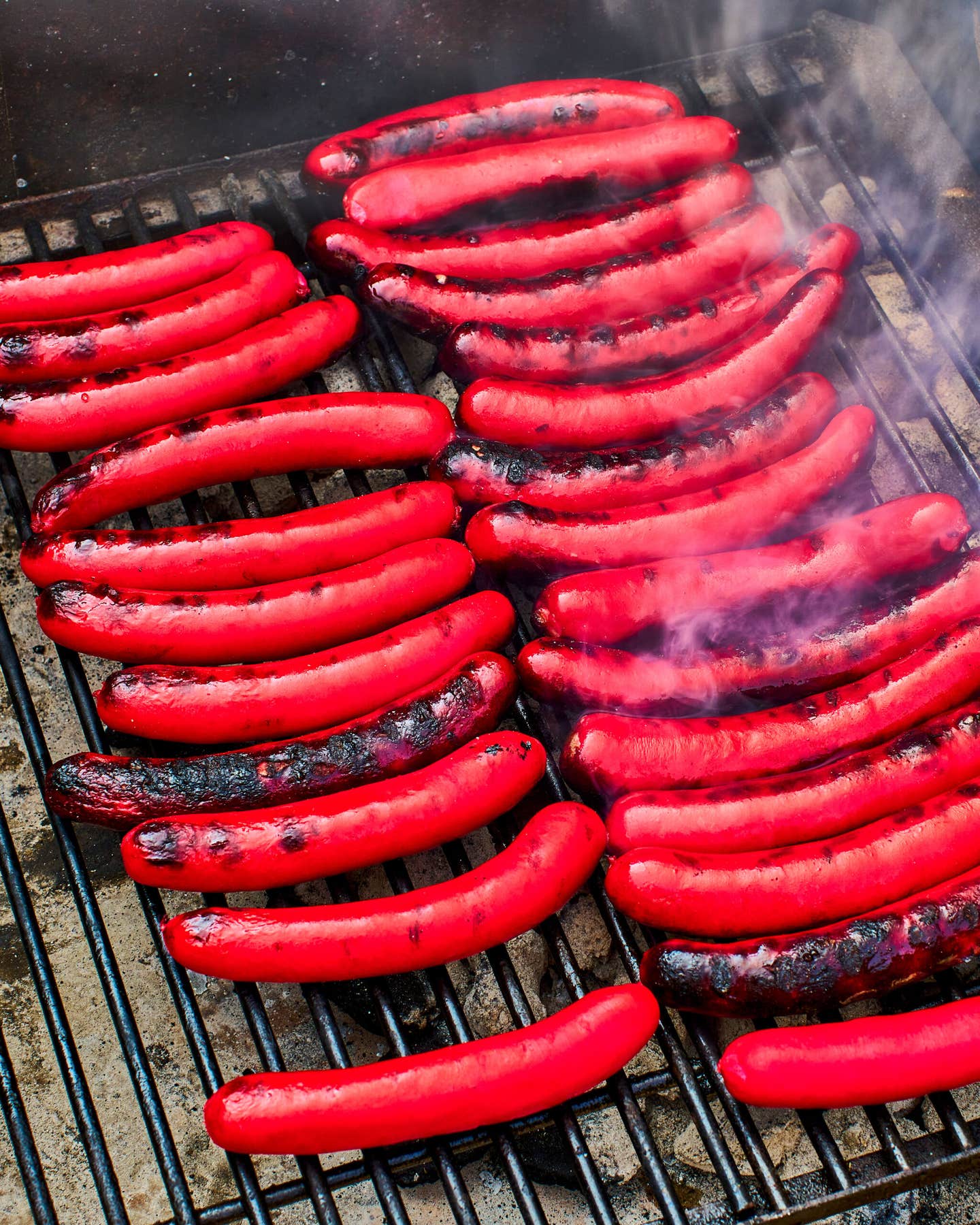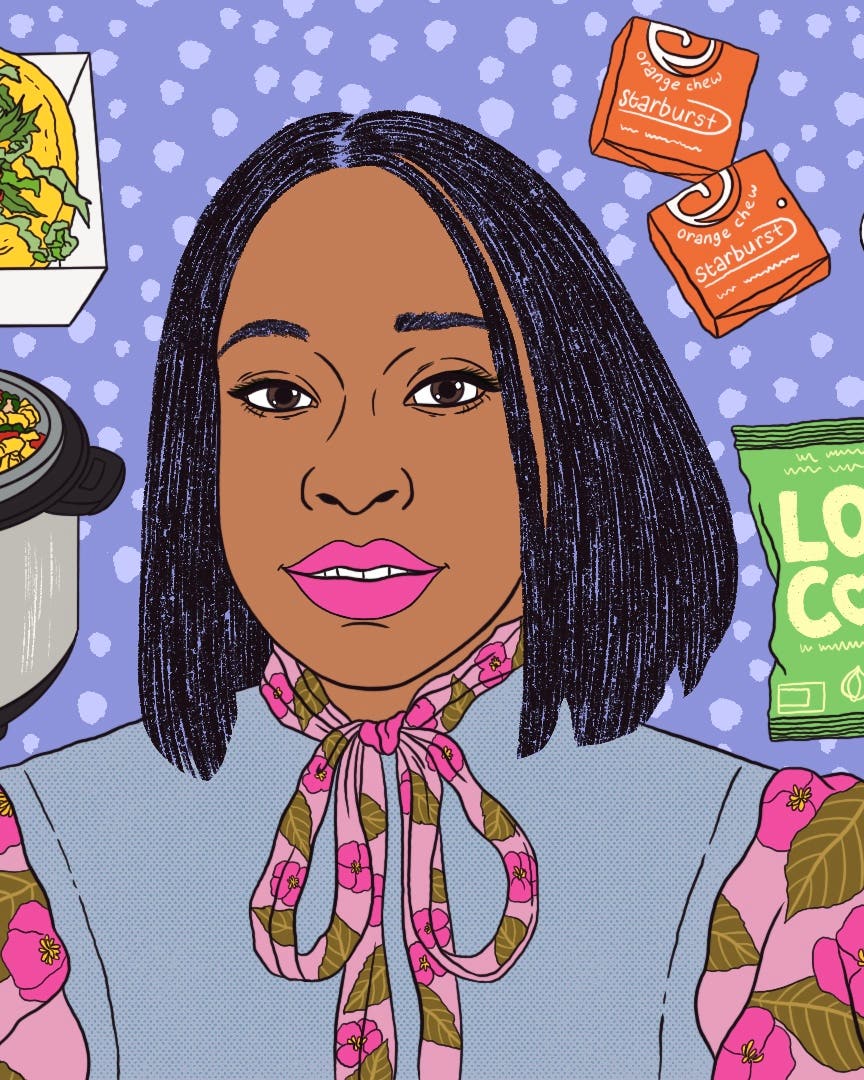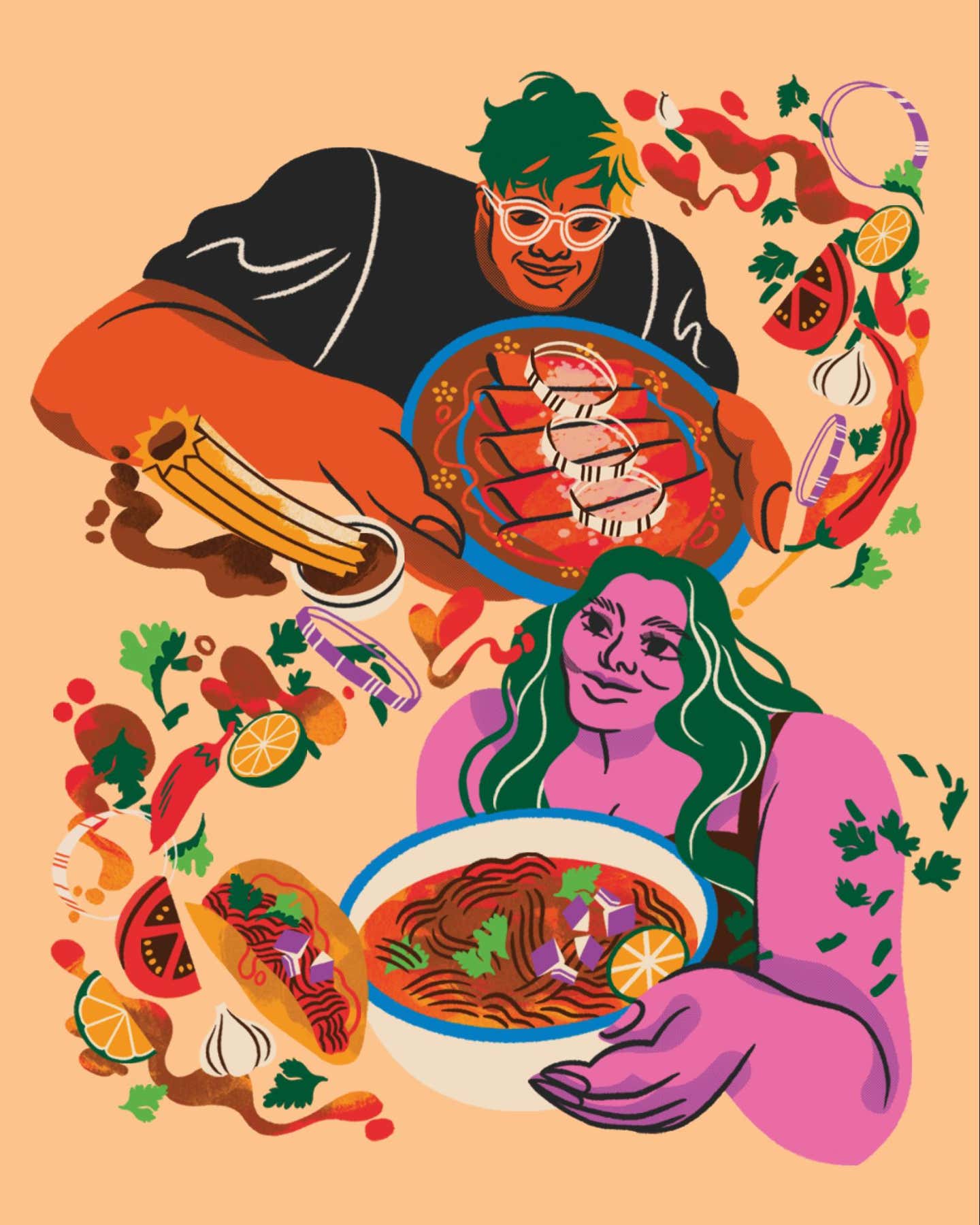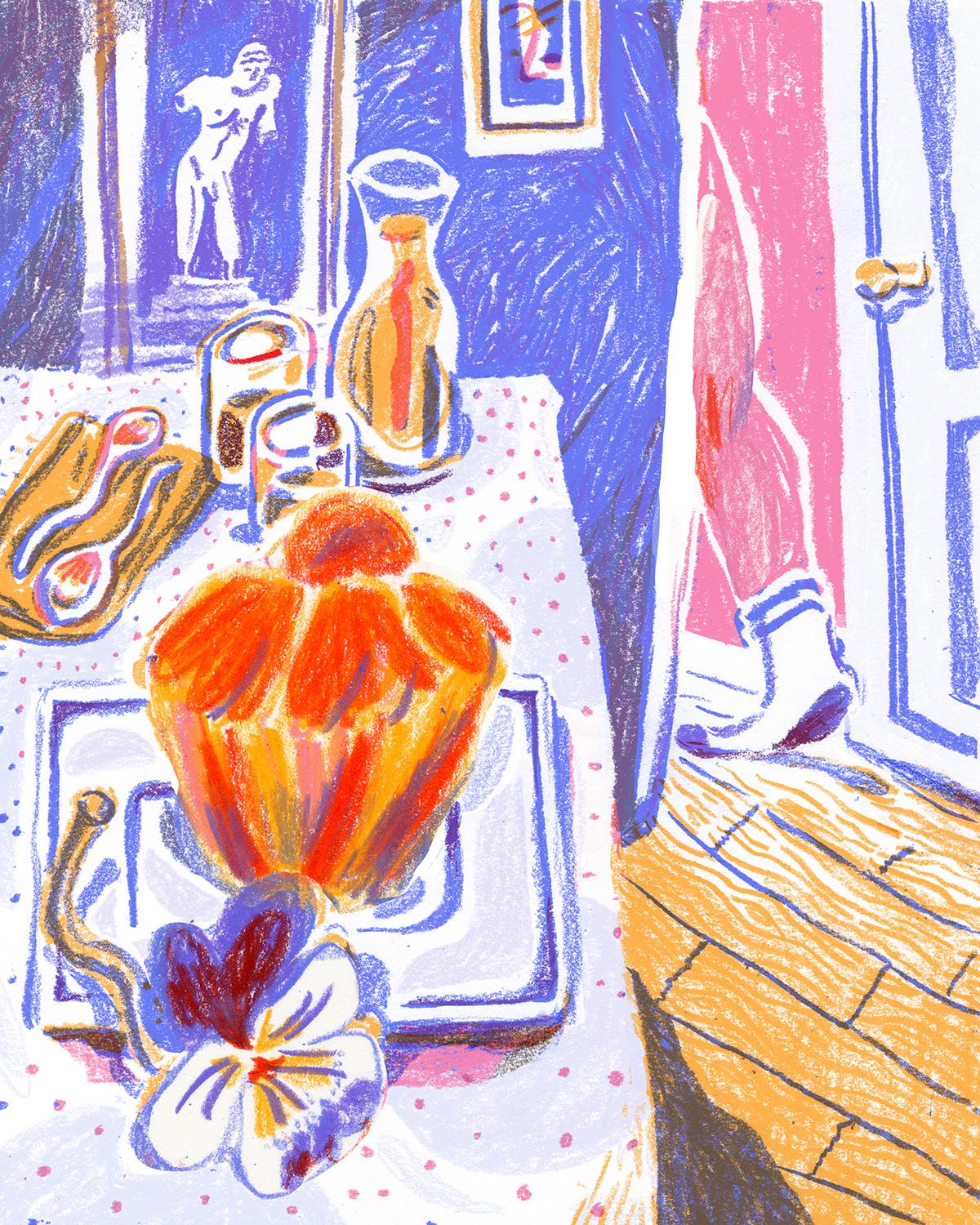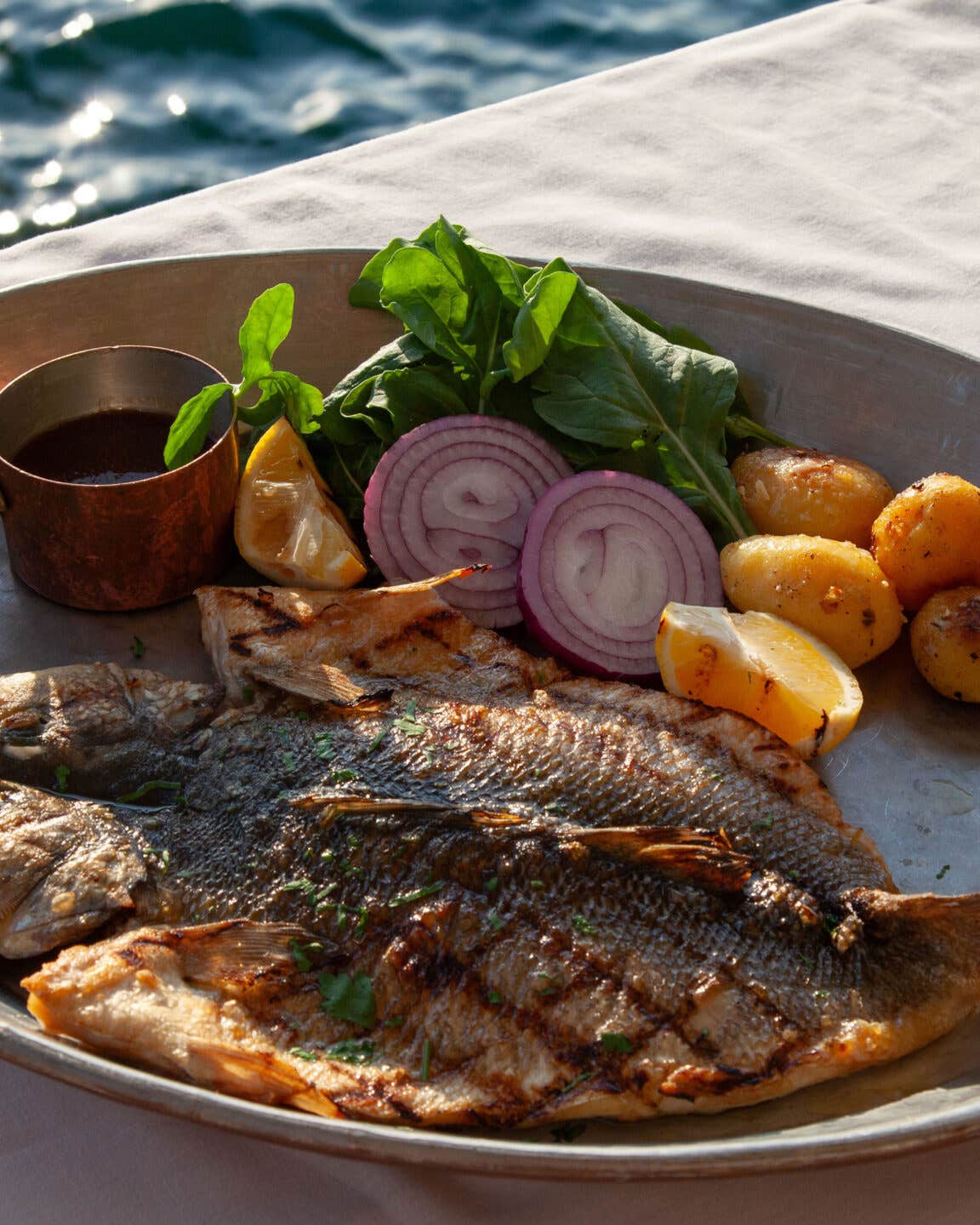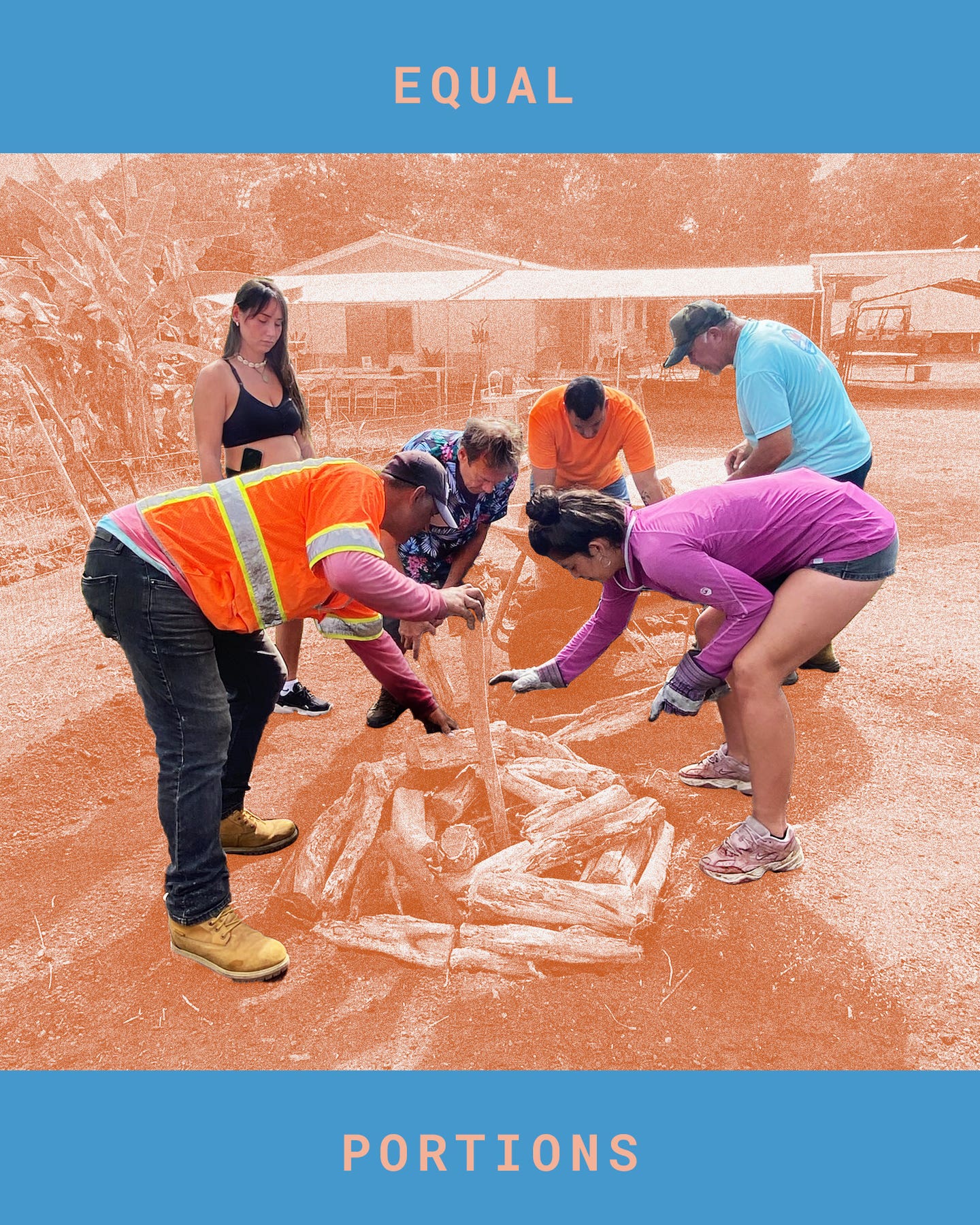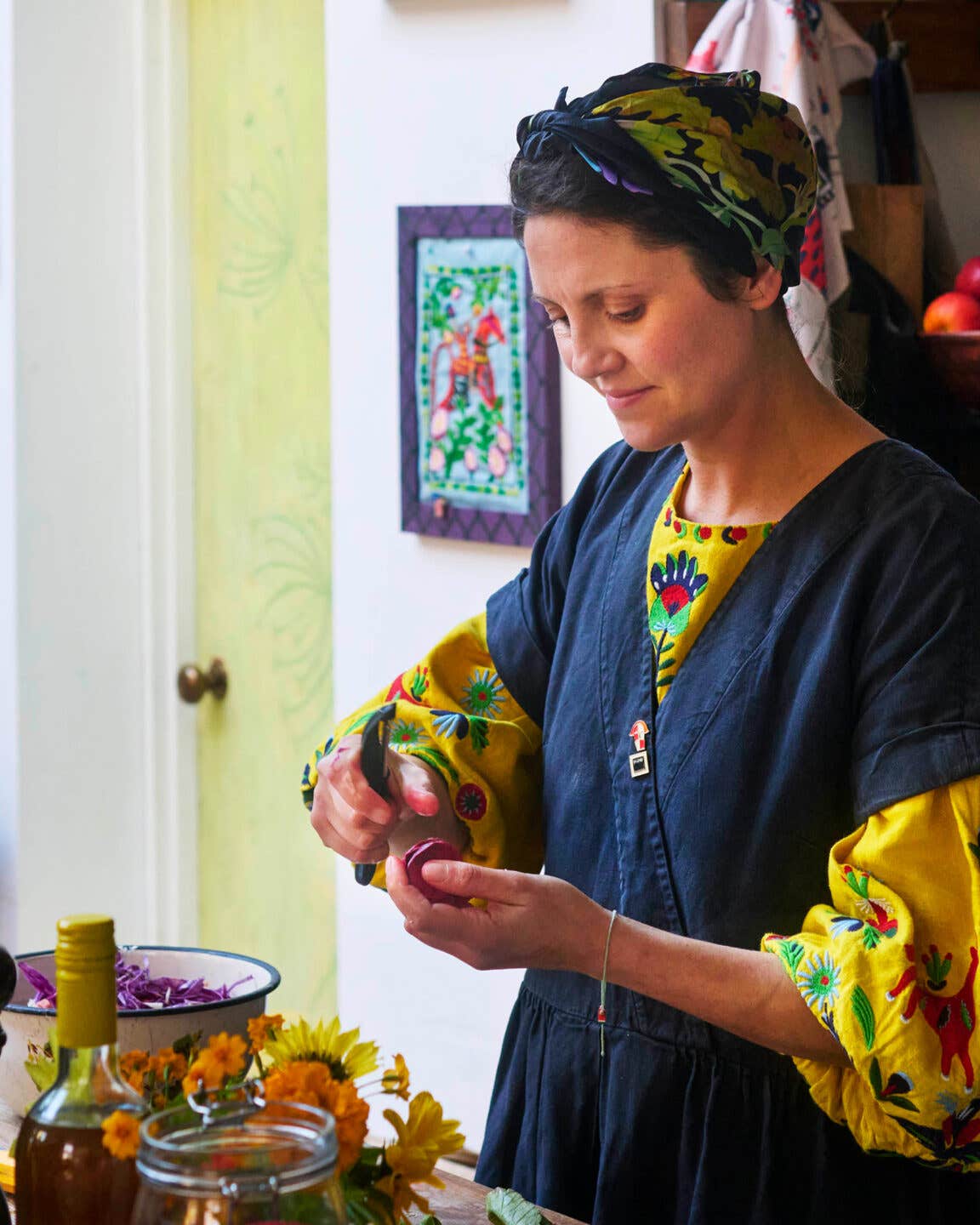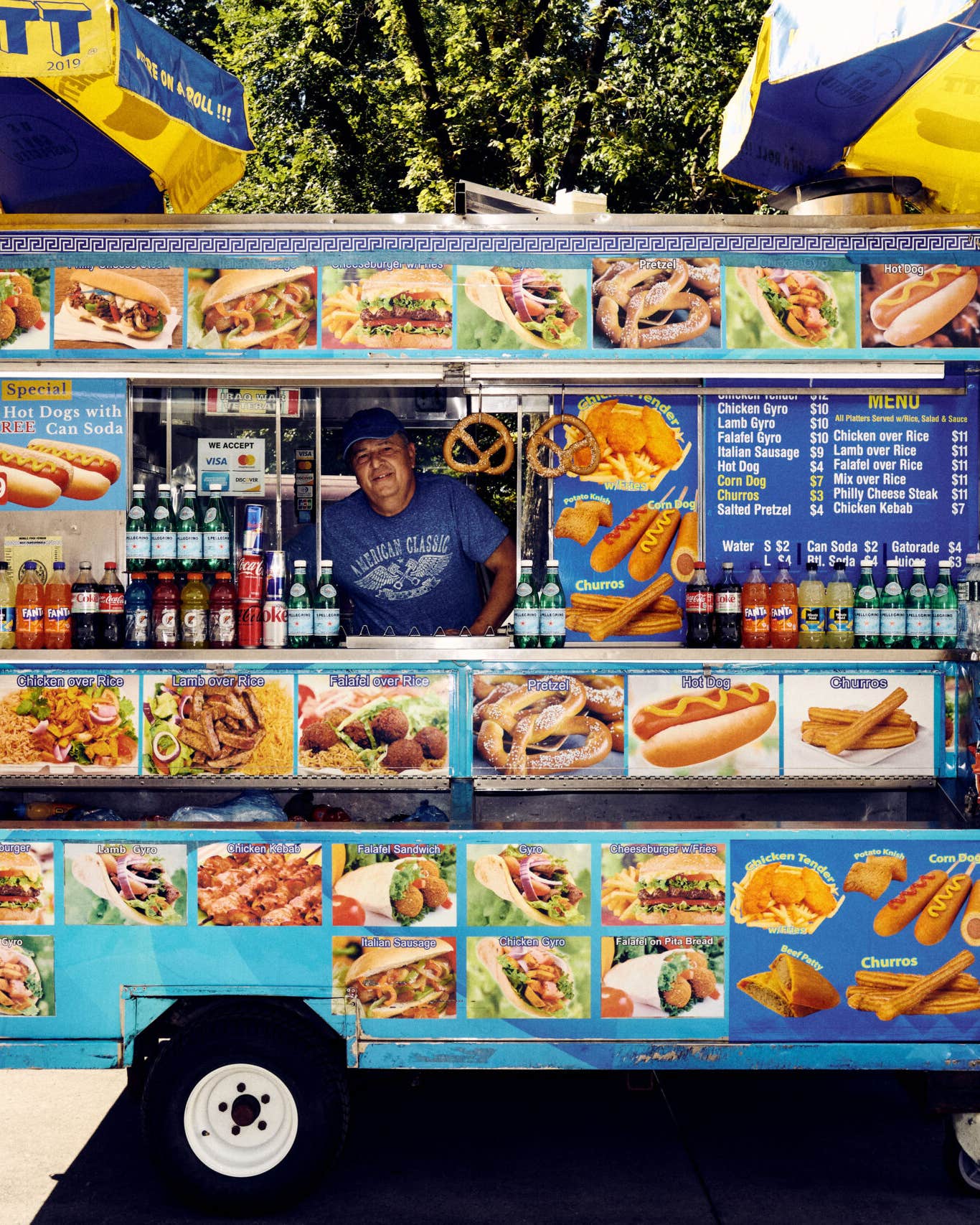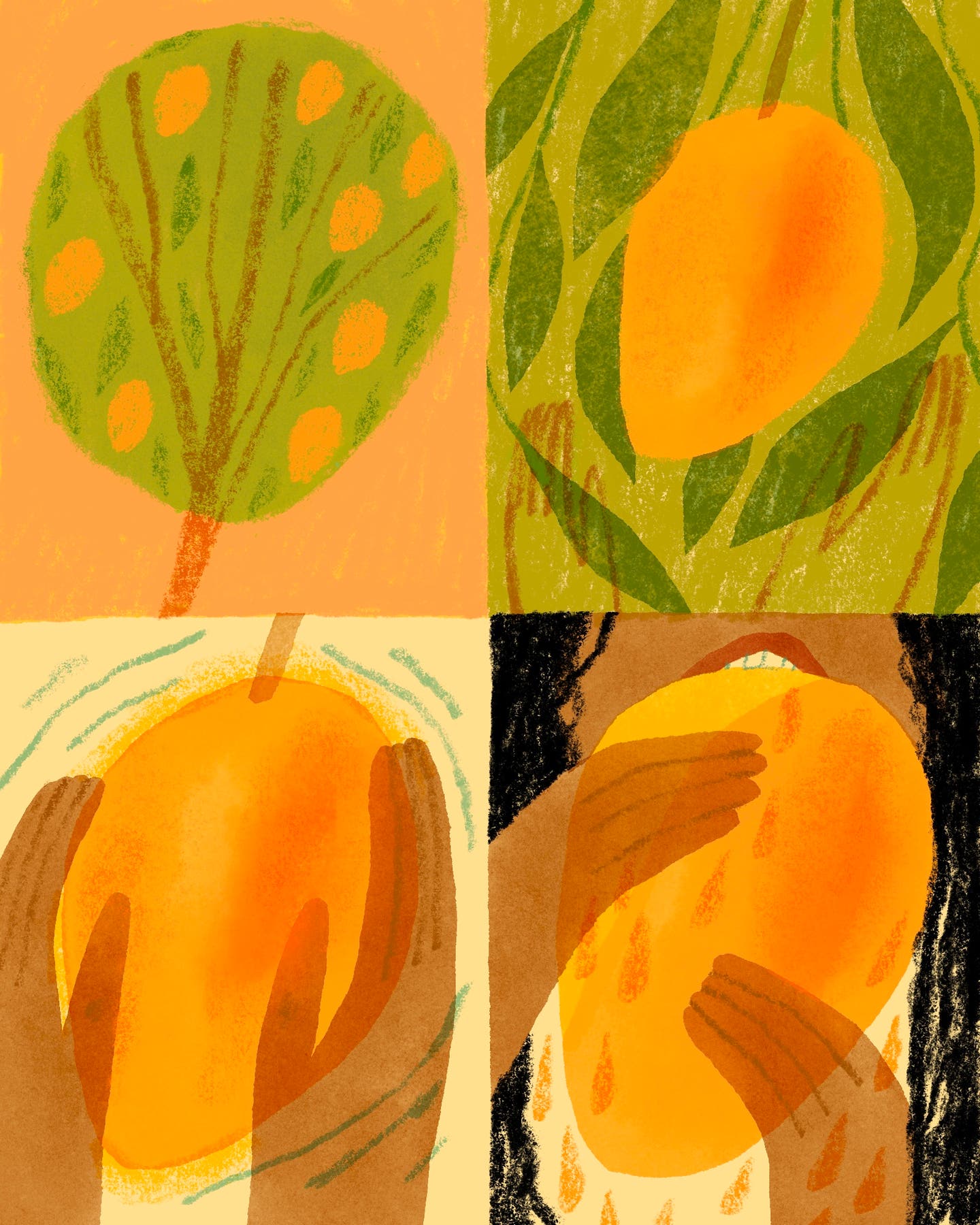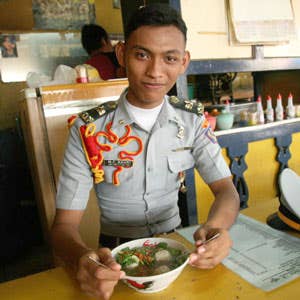
Spice World
With more varieties of morning noshes than perhaps anywhere else, Indonesia’s 237 million residents are some of the luckiest breakfasters on the planet.
Indonesia
This is breakfast in Indonesia: hot, sweet jasmine tea served in a tall glass; a plate of chile-and-garlic fried rice; a slice of buttered white bread topped with milk chocolate sprinkles called meises; a wedge of just-picked papaya;an array of leftover curries, their combined aromas rising from the table like a spice market's. To someone unfamiliar with the eating habits of this Southeast Asian nation, the first meal of the day can feel duplicitous. The choices on offer are at once sweet and savory, piquant and mild, robust and light. And despite the fact that most of Indonesia has a hot climate, breakfasts tend to be large (including meals like the one shown: a bowl of bakso, a hearty noodle soup with meatballs and Asian greens, about to be consumed by a trainee policeman in a Jakarta restaurant). All these seeming contradictions, though, make perfect sense when you consider Indonesia's geography and history. Comprising more than 17,000 islands that stretch roughly the distance separating Fairbanks, Alaska, from Miami, the country was influenced for millennia by successive waves of foreign merchants seeking its native spices and aromatics. Those visitors—among them ones from India, Arabia, China, Portugal, and Holland—left behind bits and pieces of their culinary cultures: the Chinese, for instance, probably introduced their love of morning-time rice porridge, while the Dutch likely bequeathed their affection for bread at breakfast. In time, these new traditions merged with established local ones, creating the vast mosaic that is Indonesia's makan pagi (literally, food morning). Nowadays, with more varieties of morning noshes than perhaps anywhere else, Indonesia's 237 million residents are some of the luckiest breakfasters on the planet.
Keep Reading
Continue to Next Story
